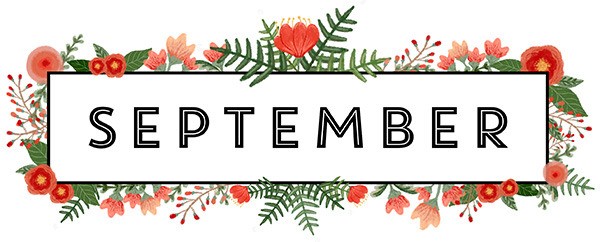Charlotte County Ostomy Support Group Newsletter for September 4, 2021 Happy Labor Day
I hope everyone had a great summer. My husband and I managed to go to New Hampshire for a
week, but it was busy with delivering furniture he made to northern NH and then going to central NH
to pick up our daughter’s furniture and things to bring back up to northern NH. We were able to visit
with family and friends, whom we haven’t seen in at least three years. We helped our daughter with
some ceiling sheet-rock work she was working on for her landlord. We went to the Seacoast to get
some lumber. They didn’t have everything we needed, so we ended up stopping in Virginia on our way
back home to pick up the rest. Bob ended up in the ER twice. Once for chest pain and once for an
infection. He is better now and has continued working on projects all summer. Yard work is a
never-ending chore that I don’t really like to do and put off until I can fit it in. My roses do well and
just take over. The weeds also take over and need more attention.
The articles below are from Hollister newsletters How I’ve Shared my Ostomy Journey Across Cultures and Countries
Brenda Elsagher talks about how ostomates of all colors, creeds, and
ethnicities find themselves on common ground.
Read Brenda’s story about how ostomies are the great leveler.
Diversity is a hot topic these days, and recently I asked a Wound,
Ostomy, and Continence (WOC) Nurse if people of different colors and
cultures have different colored stomas. Her answer was that unless their
colons are unhealthy, most stomas are usually anywhere from pinkish to
deep red.
I have visited with many people around the world and have interviewed
hundreds of people for my books, but not one has ever told me anything
about their ostomy being different. Does your stoma have rhythm? Is your
stoma good at math? Is your stoma emotionally stoic? Does this stoma
make me look fat? Sounds ridiculous doesn’t it? We make assumptions
about people and often engage in silly stereotyping, and it doesn’t get us
anywhere. I prefer to be curious myself. I love learning about others instead
of fearing what I do not know. That’s why ostomy support groups are so helpful.
When someone comes to a United Ostomy Associations of America (UOAA)
support group meeting, they will often see racial and cultural diversity in the
attendees. However, in our discussions, we are mostly concerned with how
things are working with our ostomies; our differences in color or ethnicity
usually take a back seat to our shared experiences. I have heard support group
members talk about their personal shyness and the awkwardness in their cultures
when they engage in conversations around ostomies…and almost all people with
stomas can relate to that.
When I first started talking publicly about having an ostomy and urging people to
get a colonoscopy, I used to make the audience shout out the words, “Rectum,
rectum, rectum!” This was specifically so I could talk about the subject without
shocking people. Once they said it aloud, it broke a taboo.
As I was writing my first book If the Battle is Over, Why Am I Still in Uniform?
I read some of it to my husband, who is from Egypt. I wanted to make sure he was
OK with me revealing certain details about our personal life. I read to him the part
about my diagnosis of colorectal cancer and how the doctor explained that I would
need major surgery – which included a permanent colostomy, the removal and
reconstruction of part of my vagina, and a complete hysterectomy. “Whoa,” he said.
“My family is going to read this, and in Egypt we can’t even talk about shaving legs
in mixed company. No way can we talk about our sex life!”
A good discussion followed. We determined that it was more important to help others
who might need this book than to worry about what his family might think if they
read it. And I know my husband would want you to know that even with that drastic
surgery, everything turned out all right (wink wink!). It’s been 32 years and counting so far…
Writing books and becoming a national speaker led to 24 years of talking about bowels
and butts. A couple of years ago, I was on my way to South Africa and our plane was
delayed in Nairobi for six hours, so I took advantage of a private bathroom at the airport.
I asked a maintenance worker to help me find a big bottle of clean water, requested use
of the bathroom for an hour, and tried to explain my medical condition. I don’t think she
understood anything about colostomy irrigation, but the $5 I gave her was good enough
communication. She showed me how to lock the door and I did what I needed to do.
Later in the year, we traveled to China to hike on the Great Wall. Another bonus of having
an ostomy: not worrying about needing to use a non-western style restroom, which might
require squatting. I worried more about my bad knees than about having a stoma! I have
traveled all over the world, ridden my bike long distances, and snorkeled in the ocean – and
I have never let my ostomy stop me.
Ostomies are the great leveler. Stomas don’t care what color your skin is, what socio-economic
background you come from, who you voted for, or if you wear a mask or not. They just want
to be a pretty pinkish-red color and do their job. They want you to be happy and so do I. They
relate to another person with an ostomy with compassion and encouragement – and that’s what
we all need, regardless of our diversity.
Brenda Elsagher is an author, international speaker, and comedian, and also volunteers with the UOAA. She has been
living well with an ostomy for over 30 years. Find out more about Brenda at www.livingandlaughing.com, and follow
her on Facebook @BrendaElsagher.
———Common Intimacy Concerns – And What to Do About Them
It’s natural to feel stressed about possible relationship issues related to your ostomy.
Explore common concerns about new and existing relationships, and how to put your
mind at ease.
Get help with intimacy concerns after ostomy surgery
What if my partner looks at me differently, or maybe even rejects me in some way?
How will the pouch affect my sex life? How do I approach new relationships?
These and many other questions reflect the worries many people have about intimacy
after ostomy surgery. The good news is that you can have a healthy dating life or,
if you’re already in a relationship, a lifestyle that you and your partner enjoy. You just
have to be proactive and communicate.
Here are some common concerns, and suggestions that might help.
I’m worried about when I should tell someone I’m dating about my stoma.
When you are fully clothed, no one needs to know that you have had ileostomy, colostomy,
or urostomy surgery. You can decide if you want to share that information. However, if you
are planning to be intimate and remove your clothes, the pouch can’t be ignored.
Okay, so how do I deal with new intimate relationships?
Once you anticipate that things will get serious, be sure to have a discussion before
getting physical. Start by rehearsing a short explanation to yourself or a friend. Go over
your illness or accident. Explain the surgery and why you need to wear a pouch. Once
you practice how to talk about your situation, it will go easier with a new partner.
My partner and I are worried about the impact on our sex lives.
If you are in a committed relationship, involve your partner as soon as you learn that you
need ostomy surgery. Once you do, the topic of sex will likely come up. That’s why it’s
important for both of you to talk to your surgeon or nurse specialist about how your
particular surgery will or won’t impact your sex life. Many couples say that sharing
this experience actually brings them closer.
I’m worried that pouch changes will scare my partner.
Part of involving your partner early on is having them see the pouch changed in the
hospital. The simple act of seeing the stoma helps minimize concerns. Doing pouch
changes while a healthcare professional is there to answer questions can help put both
of you at ease. For many people, the reality of a stoma is much less of a shock than the anticipation of it.
I’m worried I won’t be able to have sex for a while.
Recovery from a major operation takes time. Many people who have stoma surgery had
a debilitating condition first, which slows the recovery process. Do not expect to resume
your sex life as soon as you get home. Talk to your healthcare professional about when
you can resume sexual activity. There is no set timetable and each couple will have a different comfort level.



